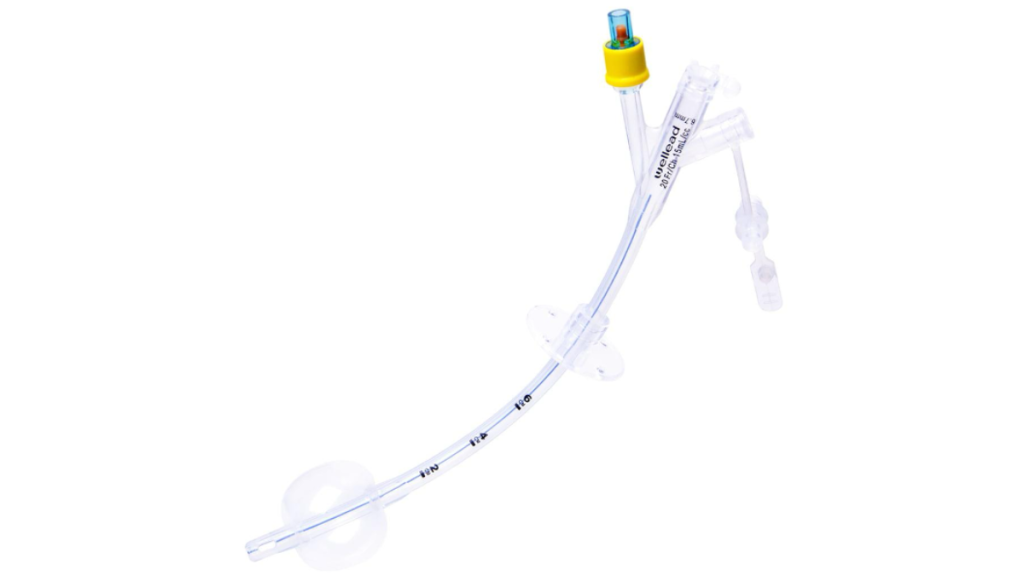A gastrostomy feeding tube is a feeding device inserted directly into the stomach through a small incision in the abdomen. This tube delivers nutrients, liquid food, and medications directly into the patient’s stomach for digestion and absorption. It is suitable for individuals who are unable to eat normally but still require nutrition.
Characterized by its small size, flexibility, and hollow structure, the gastrostomy feeding tube provides a convenient solution for patients, especially in cases where nutritional support is needed in the long or short term.
This guide will help you understand the basics of gastrostomy feeding tubes, the insertion process, application scenarios, and care points.
Gastrostomy Feeding Tube Insertion
A feeding tube is a medical device that delivers food and medication directly to a patient’s stomach or intestines. It is used for patients who cannot obtain adequate nutrition through normal eating due to illness or medical conditions.
The gastrostomy feeding tube is a type of feeding tube inserted directly into the stomach through the abdominal wall. It is also called “G-tubes.”Compared to other feeding tubes, G-tubes avoid discomfort in the nasal and throat, are better suited for long-term use.
Gastrostomy feeding tube insertion is the surgical procedure of safely and accurately placing a G-tube into the stomach. Common insertion methods include Percutaneous Endoscopic Gastrostomy (PEG) and Radiologically Inserted Gastrostomy (IRG).
Why is a Gastrostomy Feeding Tube Needed?
The gastrostomy feeding tube is crucial for a variety of clinical scenarios.
- Neurological conditions affecting swallowing.
- Chronic aspiration risk.
- Inability to keep adequate oral intake.
- Oropharyngeal or esophageal malignancies.
- Continued unconscious state or coma.
- Facial or jaw trauma stopping oral feeding.
- Congenital anomalies impacting feeding.
- Austere gastroesophageal reflux disease.
- Need for long-term enteral nutrition support.
Whether used as a temporary solution or for long-term support, this method of feeding significantly enhances patients’ quality of life.
What is a Gastrostomy Feeding Tube with Balloon?
A balloon gastrostomy feeding tube has an inflatable balloon at the end to secure the tube and prevent it from shifting.
The Gastrostomy Feeding Tube manufactured by Well Lead Medical (one of the best feeding tube suppliers) shows the advanced design of this enteral nutrition device.
The product embodies durability and biocompatibility as it consists of 100% medical-grade silicone materials. An inflatable gastric balloon inside the tube locks it in place within the stomach to lower displacement occurrences and provide more comfort to patients. The rounded tip alongside its open distal end enables gentle tube insertion with the best possible nutrient supply. Its rounded skin disk can easily adjust to maintain proper tube position. The graduated shaft allows for easy stoma depth measurement.
The product has multiple French-size options to support patients with all body structures and various medical needs. You can visit their official website for more product information or contact their professional team to purchase.
How is a Gastrostomy Feeding Tube Placed?
1. Preoperative Assessment
Surgeons examine abdominal anatomy via CT or ultrasound. They recognize safe puncture sites and check for any adhesions. They confirm the patient’s coagulation profile is within normal limits and administer prophylactic antibiotics if needed.
2. Endoscopic or Fluoroscopic Guidance
A flexible endoscope or fluoroscopy helps visualize the stomach. The operator inflates the stomach with air for a clear window. Precise localization moderates the risks of hemorrhage or visceral injury.
3. Gastropexy and Needle Puncture
T-fasteners or sutures anchor the stomach to the abdominal wall. The gastropexy stabilizes the site and forms a tract. Subsequently, the physician inserts a needle under concurrent imaging to ensure safe entry.
4. Dilatation of the Tract
The series of dilators work to expand the needle channel. Each dilator receives progressive advancement by the operator to prevent gastric mucosa tears. A sheath maintains the access channel while serving as a feeder to insert the feeding tube.
5. Placement and Fixation of the Tube
A dedicated tube is threaded through the sheath. The internal bolster or balloon is inflated, which helps secure it against the gastric wall. External retention devices prevent dislodgement and diminish leakage.
6. Post-placement Verification
Fluoroscopy or endoscopy confirms tube position. They also check for air leaks or bleeding. Early detection of complications allows prompt adjustments.
7. Long-term Management
Gastrostomy tube care prevents granulation tissue and infection. Flushes keep the lumen patent. Monitoring addresses clogs or leaks.
How long can a person live on a feeding tube? It differs with disease and metabolic demands.
Gastrostomy tube removal may be indicated if oral intake recovers or the device malfunctions.

